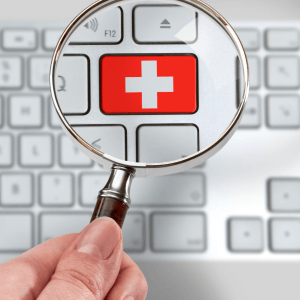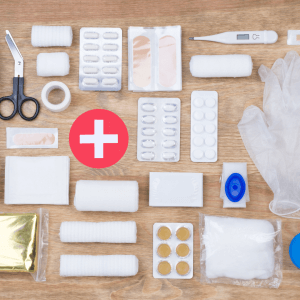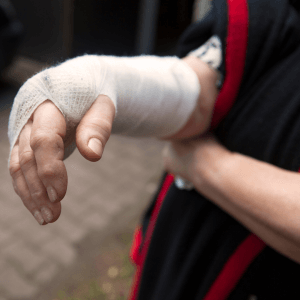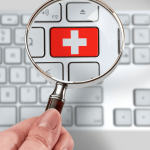Basic First Aid For Any Accident And Emergency

Learning basic first aid in any accident and emergency can help you feel confident in what to do in an emergency.
After learning first aid, you will know how to to:
- Keep a person breathing,
- Reduce their pain or
- Minimise any further injury or sudden illness until an ambulance arrives.
This could mean the difference between life and death for them.
First aid may be something that you have to do because of workplace requirements, but don’t underestimate how important it is to know these techniques when an emergency strikes.
Life-saving Procedures
First aid is as easy as airway, breathing and CPR (cardiopulmonary resuscitation), ABC.
DRSABCD stands for:
- Danger – is there any live wires? Any slippery surfaces? Is there a falling wall or oncoming traffic? The situation needs to be safe before you try to help.
- Response – is the person awake or unconscious? Can you give them a (very) gentle shake by the shoulders and call their name? Do they respond?
- Send for help – call triple zero (000). Stay calm and listen to the operator.
- Airway – Does the person have anything obviously in their mouth? Vomit? A blockage of any kind? Is the person breathing?
- If the person is responding, they are conscious and their airway is clear, assess if there are any injures or pain.
- If the person is not responding and they are unconscious, you need to check their airway by opening their mouth and having a look inside. If their mouth is clear, tilt their head gently back (by lifting their chin) and check for breathing.
- If the mouth is not clear, place the person on their side, open their mouth and clear the contents, then tilt the head back and check for breathing.
- Breathing – LOOK – LISTEN – FEEL. Put your head down so that your cheek is next to their mouth. Can you feel their breath on your cheek? Can you hear their breaths? Can you see the chest rising? If the person is unconscious but breathing, turn them onto their side, and support them until the ambulance arrives.
- CPR (cardiopulmonary resuscitation) – if an adult is unconscious and not breathing, make sure they are flat on their back and then:
- Place the heel of one hand in the centre of their chest and your other hand on top
- Press down firmly and smoothly (compressing to one third of their chest depth) 30 times
- Give two breaths (Pinch their nostrils closed)
- Keep going with the 30 compressions and two breaths at the speed of 2 per second.
- Defibrillator – for unconscious adults who are not breathing, apply an automated external defibrillator (AED) if one is available. They are available in many public places, clubs and organisations. The devices are very simple to operate. Just follow the instructions and pictures on the machine. If the person responds to defibrillation, turn them onto their side and tilt their head to maintain their airway. Some AEDs may not be suitable for children.
Emergency Situations
First aid for a person choking
Choking is the number one thing we get asked about as it is one of the most common first aid situations especially in children, so it is very important that you know what to do in an emergency with someone who is choking.
You might need to roll them onto their side, but spinal injury is always a possibility in anyone involved in an accident. There are ways of placing an injured person on their side so that there is very little movement to their spine. You can learn these skills in a first aid course.
We go over techniques to help a person choking in detail at our first aid courses. You can easily book a class for your workplace today here.

Basic first aid kit
As well as knowing some basic first aid techniques, it is important that households and workplaces have a first aid kit that meets their needs and is well organised, fully stocked and readily available at all times. This kit should always include an AED otherwise known as a defibrillator.
The contents should be appropriate to cope with a range of emergency situations, depending on the setting. It’s a good idea to have a few kits handy in different places.
Reducing the risk of infected wounds during first aid
Here are some ways you can easily reduce the risk of infection when administering first aid:
- Wash your hands if possible before managing the wound. You could also use an antibacterial hand sanitiser.
- Use disposable gloves provided in your first aid kit.
- Try to avoid breathing or coughing over the wound.
- Cover the wound with a sterile dressing.
Immediately apply pressure to a heavily bleeding wound (or around the wound if there is an embedded object), and apply a bandage when the bleeding has slowed down or stopped. Call triple zero (000) immediately.
Using bandages during first aid
General suggestions include:
- The injured person should be sitting or lying down. Position yourself in front of the person on their injured side.
- Make sure their injured body part is supported in position before you start to bandage it.
- If the injured person can help by holding the padding in place, wrap the ‘tail’ of the bandage one full turn around the limb, so that the bandage is anchored.
- If there is no assistance, wrap the ‘tail’ of the bandage directly around the padding over the wound.
- Bandage up the limb, making sure each turn overlaps the turn before. Alternatively, you can bandage in a ‘figure eight’ fashion.
- Make sure the bandage isn’t too tight so you don’t reduce blood flow to the extremities (hands and feet).

Broken Bones and Dislocations
You can apply the following first aid for a suspected fracture, and then seek medical help:
- Give some pain relief in the form of paracetamol, ibuprofen or both;
- Reduce movement of the affected area, you can apply a splint or a sling to an arm, putting on the triangular bandage to support the arm and keep it in one place. If it is a leg, you need to be very careful about moving the person. If it is comfortable enough to elevate the leg it may be ok to elevate, but usually, with a leg fracture, you need to call the ambulance, because moving the person will be very difficult.
- Apply an ice pack to the affected area. Remember to always make sure that the ice pack is wrapped in something so it is not directly on the skin.
- Elevate – you can elevate the arm on route to the hospital. If you don’t feel comfortable, if you think the break is very obviously deformed and you can’t move the person then you can call an ambulance.
- With an open fracture or a compound fracture, DO NOT move this person, call an ambulance. You can still give some pain relief and perhaps cover the injury with a very light covering if the patient is getting distressed looking at it. The ambulance can assess the damage on arrival and also give stronger pain medication.
Where to get help in emergency situations
- In an emergency, always call triple zero (000)
- Your doctor
- The emergency department of your nearest hospital
Want more? We’ve got you covered…
Our Baby First Aid Courses
Our baby first aid courses are available in person in your home and online. We run classes in your home with groups of 2, 4 or up to 10 in Sydney & Melbourne and you can book in 3 easy steps!
- Pick your class
- Follow the prompts to purchase
- We will contact you within 24 hours to lock in your date of choice
Our First Aid Certificate Courses
We run most of the popular first aid courses Australia wide. HLTAID011 Provide First Aid, HLTAID009 Provide CPR, HLTAID012 Provide First Aid in an Education & Care Setting, RAMOAP (anaphylaxis), Mental Health first aid and CPR/LVR to name a few.
Book your public spot online or contact us if you have a group of 5+ people for onsite training.
Here are some other resources you may enjoy!
FREE GUIDE: Your Virtual Baby First Aid Kit
FREE GUIDE: Introducing Common Allergy Foods & Allergic Reactions
FREE Workplace Emergency Preparedness Plan: Grab this at the bottom of every page!
Follow for baby & child first aid and allergy info and tips on Instagram, TikTok & Facebook all @thenestcpr


